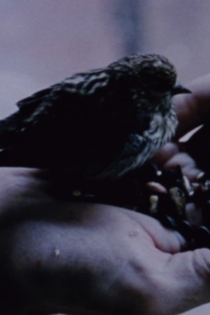
Erin Espelie
2021Gathering Moss
Erin Espelie
Humans have used moss for at 1,000 years to help heal their injuries. --Smithsonian Magazine, 2017. Mosses and other small beings issue an invitation to dwell for a time right at the limits of ordinary perception. --Robin Wall Kimmerer, 2003. The world now sacrifices everything to speed. Quiet seems to be regarded as a detestable condition to be expurgated by any means which applied science can devise.--F. Percy Smith (dir. Gathering Moss, 1933)
Gathering Moss

The Millers
Erin Espelie
10 quintillion insects live on the planet—that is, 300 pounds of insects for every pound of human flesh. They drive decomposition, dissolution, and decay that makes way for the new. They run counter to the Anthropocene, which is about accumulation, consumption, and unsustainable accretion.
The Millers

Valleys Of Fear
Erin Espelie
Valleys of Fear weaves together disparate histories, stories, pathologies, in order to find commonalities with current realities and to explore the pull between the rational and irrational: the human impulse to make “scientific and objective” judgments about the world around us, in opposition to our inability to prevent the personal from intervening—be that political, romantic, or physical.
Valleys Of Fear

A Net To Catch The Light
Erin Espelie
An orb-weaver spins its web, captures prey, and filters light. How does other light get filtered or created? Digitally and energetically, light and its origins drive our circadian rhythms, our internal clocks, and affect the retina. Blue light, in the realm of 400 to 500 nanometers, has become increasingly pervasive, just as our light sources have homogenized. How does this ownership of the eye, of light, of the world, unwind us?
A Net To Catch The Light

Tenebrio molitor
Erin Espelie
A film for A.R. Ammons, author of Garbage: A Poem (1993), and baculovirologist Lois Miller. 10 quintillion insects live on the planet—that is, 300 pounds of insects for every pound of human flesh. They drive decomposition, dissolution, and decay that makes way for the new. Specifically, darkling beetle larvae, Tenebrio molitor (roughly translated as "death spirits" and "millers"), better known as yellow mealworms, are capable of digesting Styrofoam by way of their gut microbiome, biodegrading the plastic waste into carbon and hydrogen. Their lives run counter to ours, which revolve around accumulation and accretion.
Tenebrio molitor

